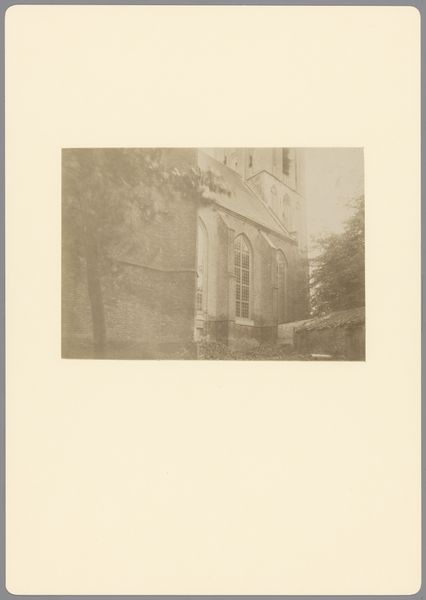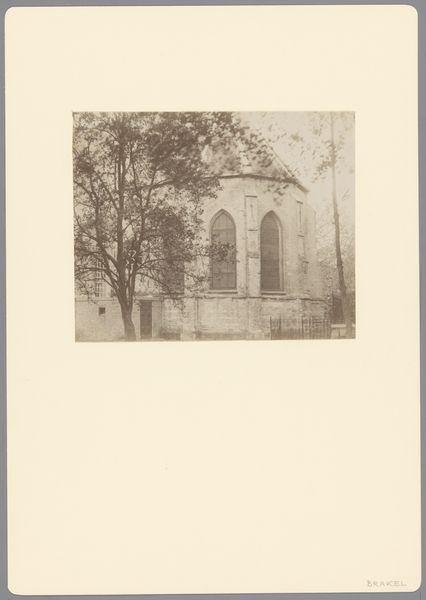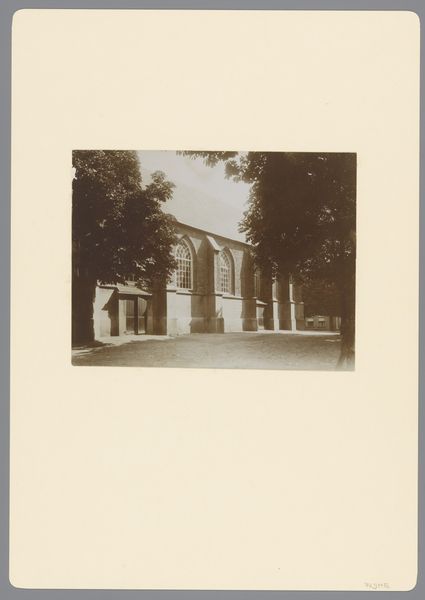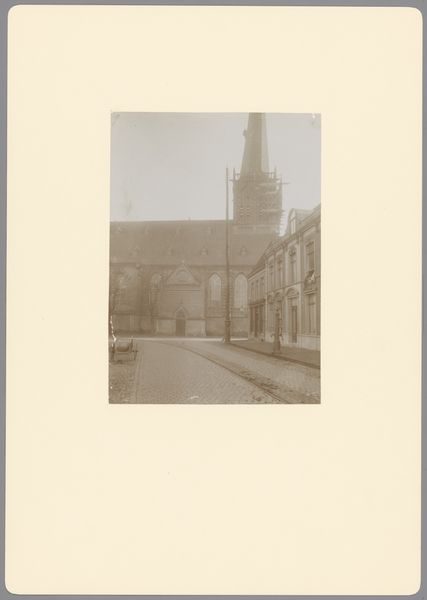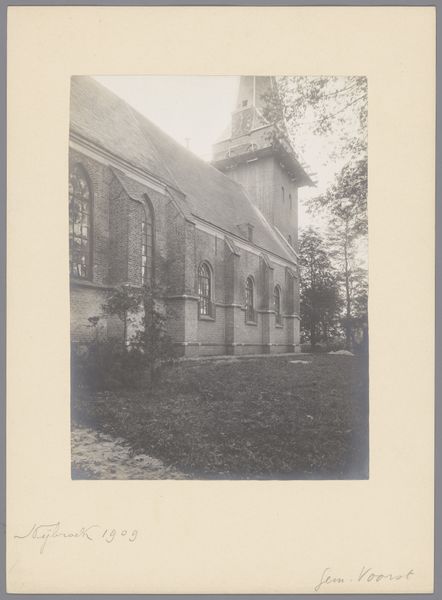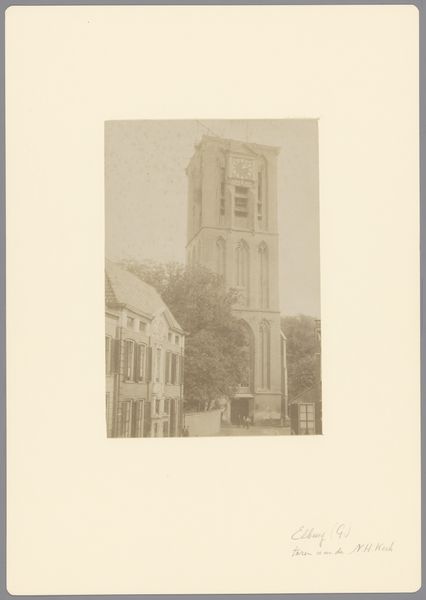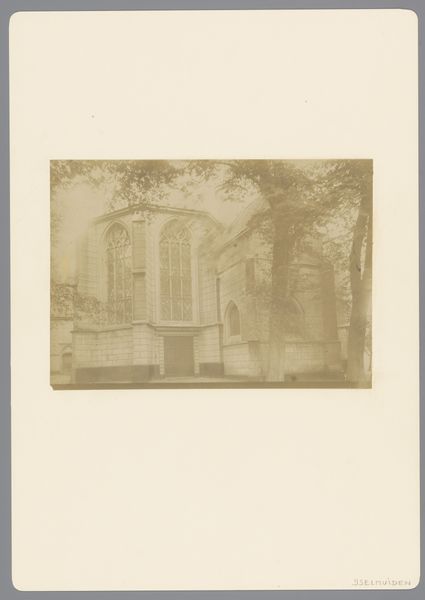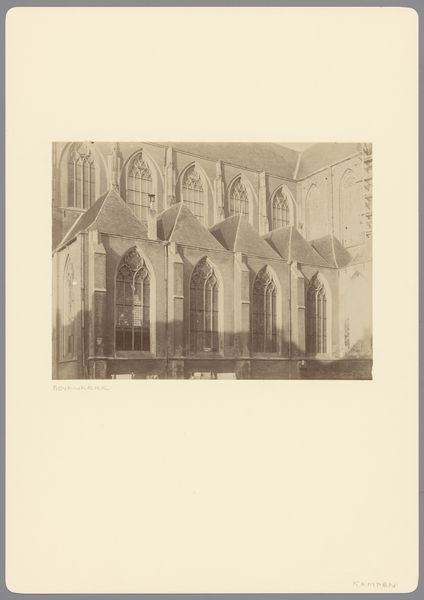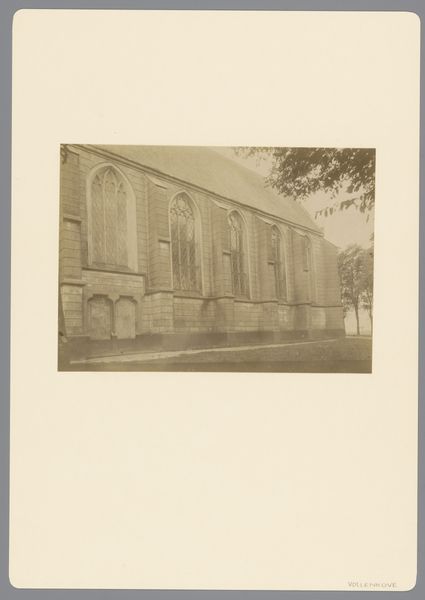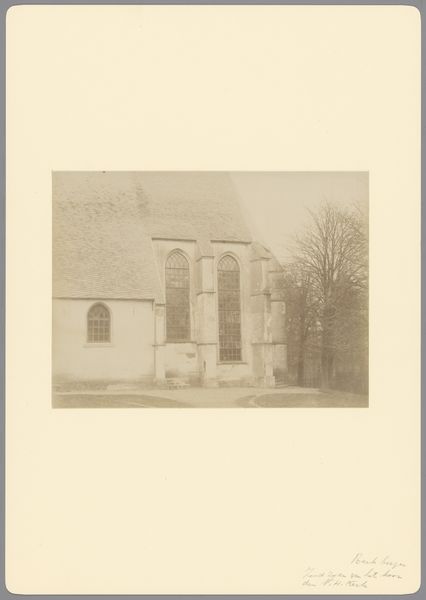
Dimensions: height 170 mm, width 231 mm
Copyright: Rijks Museum: Open Domain
Curator: Immediately, I'm struck by the ethereal quality of this image; it’s both calming and monumental. Editor: Agreed. It’s an archival photograph dating from 1898 entitled “Zuidzijde van de Grote of Sint-Gudulakerk te Lochem”, which translates to “South side of the Great or Saint Gudula Church in Lochem”. Curator: That tells us quite a lot about it being an external architectural rendering. The rhythm of the windows, that soft light...it feels almost dreamlike. I see arches—reminders of heaven itself, doorways, transitions... perhaps symbolizing the aspirations of the town's inhabitants, and the ever-present faith they place in it. Editor: Absolutely, the Gothic architecture certainly evokes that upward reach toward the divine. But also, let's not forget the power these religious institutions held historically. Dominance expressed architecturally; even this muted photograph hints at that legacy. What do you read into its gender and how this connects with broader social context? Curator: In architectural images like these, light can also function as an allusion. In my understanding the church itself is built for the divine which is a gender-neutral belief. To connect this image to societal change is interesting but potentially subjective, depending on the current zeitgeist or even cultural biases. The photograph creates a sense of reverence in this setting where every detail, carefully thought out in construction of the cathedral and now image, tells a story about that relationship. Editor: But whose stories are really being prioritized? While I appreciate your perspective, my question stems from a place of inquiry on accessibility in institutionalized belief. Which I guess we will just have to leave that for listeners to ruminate on. Curator: Indeed, interpretation always hinges upon the interplay between object, the moment, and the beholder’s mind. Perhaps it reflects our enduring impulse to frame and contain history itself. Editor: Or our responsibility to examine whose stories are most clearly present in its frame. That's something for us to consider more deeply.
Comments
No comments
Be the first to comment and join the conversation on the ultimate creative platform.
